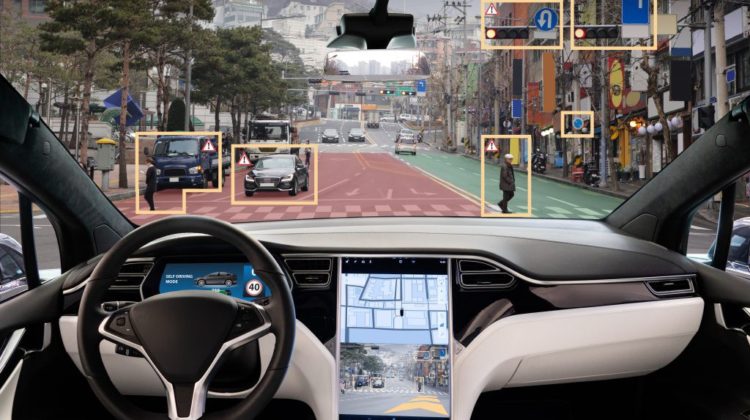
Self Driving Cars have been one of the most well-known and popular applications of Artificial Intelligence today. Numerous news stories and opinions about this technology offer differing perspectives of the technology, some positive and some skeptical. In this blog post, I will explain the companies that are behind Autonomous cars and I will give a brief introduction to the technology (both hardware and software) behind Autonomous Cars. In a future post, I will highlight the most important pros and cons of this technology. Through this post, I hope that I can provide enough information about Autonomous Cars in order for the readers to be well-informed about this technology that will change the future.
Autonomous car companies and organizations
There are numerous well-known companies that have been involved in the development of new autonomous cars. Some of the biggest players in this industry are Waymo (subsidiary of Alphabet), Tesla, Apple, Uber, and many others. Numerous traditional car companies have also entered into this industry as they see the potential of this technology in the future of automotive transportation. In fact, some of these traditional car companies have partnered with tech companies to develop full or partial Autonomous systems for their future vehicles.
In addition, some companies working on Autonomous cars already have partial automation features such as autopilot and cruise control. Tesla is one major example, as all of it’s new models have autopilot, auto park, and lane assistance features. They use these features as a gradual transition to a completely autonomous car. These companies also test prototype versions of their Autonomous cars in different regions of the United States, with a majority of them operating in California.
Hardware and Software behind Autonomous Cars
Autonomous cars involve numerous pieces of software and hardware, from sensors and cameras to detect the surroundings to Machine Learning and Neural Network models to decide the actions of the car. One of the most popular vision technologies among modern Autonomous cars is LIDAR, which stands for Light Detection and Ranging. This piece of hardware uses light waves from lasers instead of using radio or sound waves to detect objects around it. The technology uses the time it takes light to hit an object and reflect back to the sensor to find the distance between the car and the object by using the speed of light. However, Tesla, one of the major companies involved in Self-Driving cars, don’t use Lidar in their vehicles. Instead, they use cameras and radar in place of Lidar, being the only major Autonomous car company to do so.
“Lidar is a fool’s errand … [They are] expensive sensors that are unnecessary”
— Elon Musk
Both of these technologies have their advantages and disadvantages, especially in terms of cost and resolution. Lidar sensors tend to be much more expensive than radar and cameras and they are much larger than radar and cameras. However, the cost of Lidar has been significantly decreasing as a result of increased production. One of the major problems with radar is that it has a very poor resolution compared to Lidar, which makes it harder to detect and identify objects. However, the addition of numerous cameras in Tesla cars lowers this problem since cameras have much better resolution than radar. Both of these technologies have been rapidly improving and are also becoming a lot cheaper, making both a viable option for newer Autonomous car companies and organizations.
In terms of software, all major Autonomous car companies use one of many new ML models and Neural networks designed for Autonomous cars. In a broad sense, the three major aspects of Autonomous car software is to detect the object, identify or classify the object, and then localize or predict the movement of the object. There are 4 different types of algorithms that are used to accomplish these tasks: cluster algorithms, pattern recognition algorithms, regression algorithms, and decision matrix algorithms. For these 4 main types of algorithms, AdaBoost, Bayesian Regression, Multi-class Neural Network, and Support Vector Machines (SVM) are some of the most popular kinds. These algorithms have been constantly improving as a result of the rising interest and participation in the Self Driving car industry. Major companies such as Waymo (Google), Tesla, and Uber use some or all of these models and algorithms in their Self Driving cars, contributing to greater innovation in the field of Machine learning and AI. These models and algorithms, combined with input from sensor and camera data, are the most essential components of an Autonomous car.
I hope that this post has given you a better understanding of a very consequential and innovative technology that has the potential to alter the future. It has already caused numerous changes to the transportation industry, with major automakers entering this field along with technology companies. In a future post, I will signify the major pros and cons of this technology.
